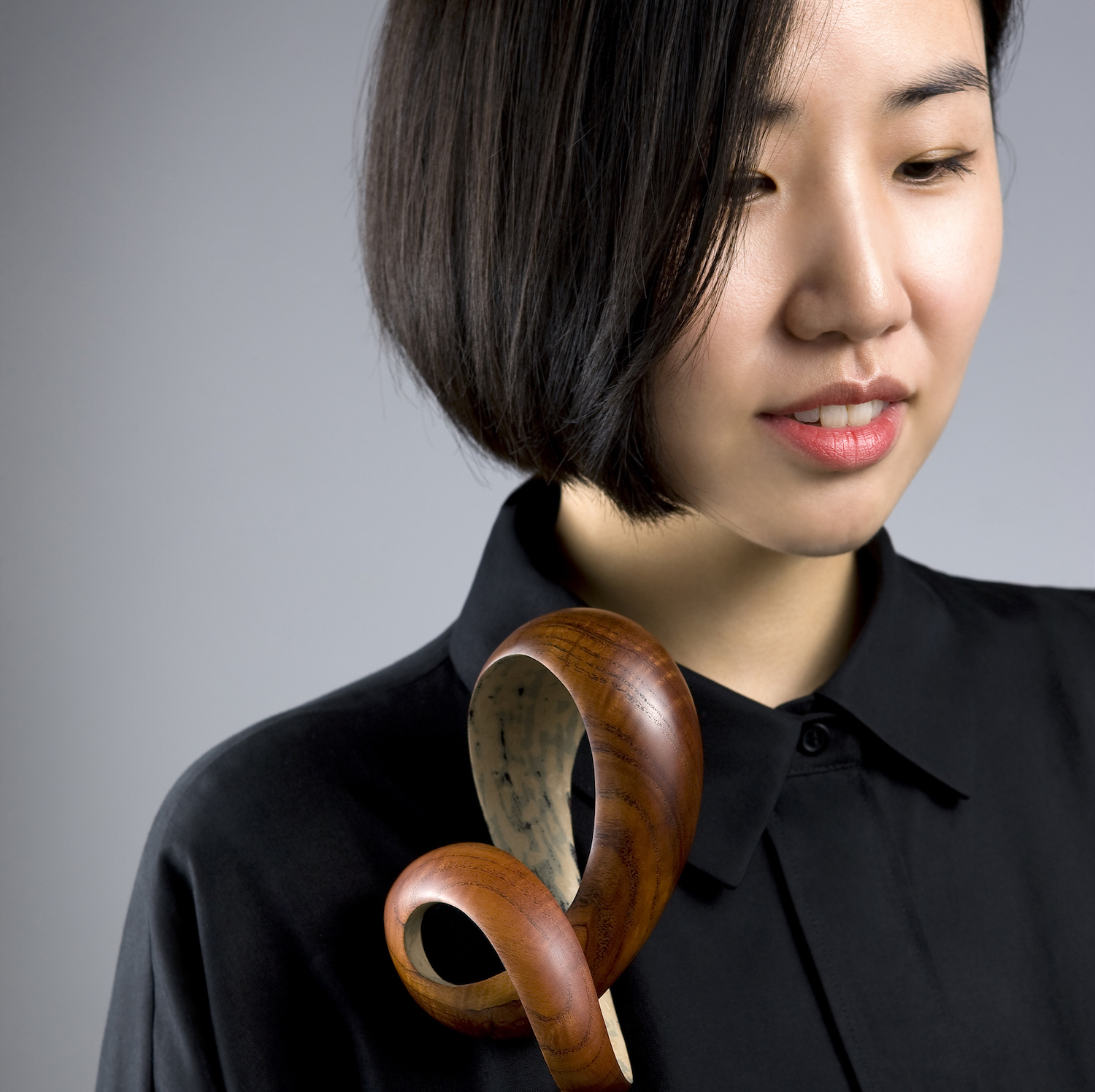
Joo Hyung Park
Joo Hyung Park is an applied artist and contemporary jewellery maker living and working in South Korea. She integrates pieces of cutlery in wooden or metal surfaces as if they were soft and bendable. The tableware sculptures are intended as snapshots of the actual moment of eating. By transforming and combining chopsticks, spoons, forks and bowls, she does not only harmoniously unite European and Asian culture, but also transforms culinary utensils into a visual experience.
If you had access to all the powers, how would you improve the world?
There are many things I would love to change with all the powers, but the first thing I would like to do is ending animal abuse. I want all the animals in the world to be treated with respect. I know many people suffer from poverty, illness, and so many horrible things but if we wait until every human being is happy for animals to be treated well, that day may never come.
What are the biggest sustainability challenges in your work and how are you addressing them?
My main materials are wood and lacquer which all came from nature and can go back to it. However, the sub materials, for example, lacquer containers, brushes, or sandpapers are the main things in my trash can. I am trying to reduce as much as possible while maintaining productivity in my workshop.
Which conscious lifestyle choices are you making? And are you considering any new ones?
I have been avoiding using leather, fur, and any materials that come from animals for both my work and my life since 2013. Also, I am a pesco-vegetarian trying to be a vegan one day. I know the best thing I could do for the earth is not existing, but since the existence already happened, finding the balance between my life and the earth’s is the job. Another thing I am trying hard is to keep myself safe from COVID-19 by wearing masks but to use as few masks as possible.
What have you rebelled against in the past, and what are you rebelling against now?
If I had to choose one, it would be practicality. I was originally trained as a jeweller and since jewellery needs to be on the human body, there were things that I had to consider such as wearability. However, from my point of view, when an object is beautiful and gives us joyful excitement just by looking at it, it fulfilled its duty as a creation. Nowadays, I make cutlery and tableware more than jewellery, so it moved on from wearability to practicality. When people see my cutlery, the first question is “what is it” and the second question is “are they comfortable to use”. I then explain that some of my cutlery are unexpectedly easy to use despite how they look, and some are usable but not as comfortable as other ordinary cutlery. Practicality is very important when something has expected functions, but I decided not to let it be potential drags to my idea. My pieces show the moment when we use cutlery with our hands. When they are laid on a table, they still have the forms of being in use. We use that very moment to deliver food to our mouth which, in my mind, is completing the duty of cutlery. With the cutlery pieces, I wish to tell the story of how my hands seized the moment, and made that moment into new cutlery. There are more than thousands of comfortably usable cutlery out there. Why do I have to make one of those? It is also the reason why I love the Steinbeisser project, it encouraged me to be more experimental and not to think practical.
What was the inspiration for your Steinbeisser pieces?
It has always been the moment of pleasure to use our hands. I desire to capture the moment that gives us pleasure by using our hands, and make that moment into something else.
Describe your work in 3 words!
Hands. Moment. Pleasure.
What has been your favorite dinner experience?
It was in Florence in the summer of 2008. I was taking architecture class in Rome and had a field trip to Florence for a week. I was having the worst experience in Rome, due to its extremely hot weather, expensive food, and too strong coffee. At the end of our field trip, our professor took us to his favorite restaurant in Florence. It was a small but cozy place and he already ordered everything so we didn’t even get to see their menu. Everything, even the olives (I do not like olives) were so delicious and the pasta was one of the best I ate in my life.
What excites you about tomorrow?
The working process for my wooden pieces has three steps. Carving wood to get the form, applying color lacquers as many times as needed, and peeling them off to create an organic pattern on the wood. The last step is the most fun part and tomorrow, the lacquer layers on the pieces will be dried and I get to peeled them off. Sometimes the patterns are not as beautiful as I wanted them to be, so I have to go back to the second step. But most of them have unique qualities that cannot be reproduced.